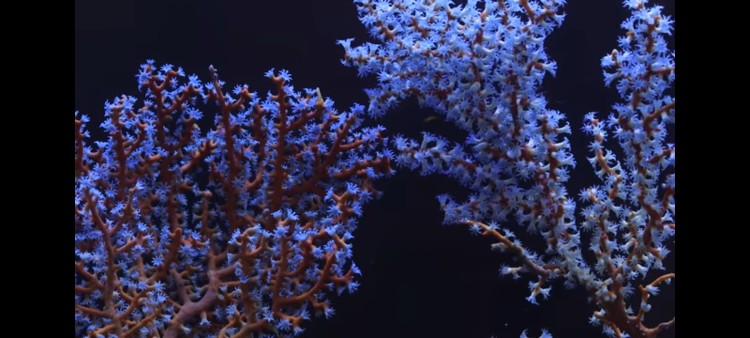Gorgonian Sea Fan Corals: Quick Care Guide
- Nov 22, 2021
- Anshika Mishra
- 944 0 0

An often-overlooked category of corals is the Gorgonians. It includes both photosynthetic and non-photosynthetic sea fans as well as sea whips that grow in a crocks-crew shape. What sets them apart from other coral is the presence of a protein called Gorgonin.
Gorgonians
Gorgonin gives the Gorgonians a distinct leathery texture that is hard to describe. It is similar to some soft corals to the touch but is more rigid and gummy as if it were made of cartilage. This consistency allows the gorgonian to blow back and forth in strong surges while maintaining its fan-like shape.
In the Caribbean, photosynthetic Gorgonians can be found almost everywhere, blowing back and forth, and many of the colonies grow to giant sizes. The coloration of the Caribbean sea fans tends to be more muted. Mainly, one would find various shades of purple, pink, and cream.
In the Pacific, far more non-photosynthetic varieties come in much more boisterous colors, such as red, yellow, blues, and even some that are rainbow.
The problem with these is the non-photosynthetic part. Non-photosynthetic, in general, are a challenge to keep alive because they require regular feeding for popular nutrition. Filter feeding non-photosynthetic corals are particularly challenging because of the sheer quantity of food they require. In the wild, they have access to practically a continuous supply of food in the water column—something almost impossible to reproduce on the hobby scale.
Practical Tips
If you are looking to add a Gorgonina to our reef aquarium, then here are some practical tips:
- First, consider a photosynthetic specimen from the Atlantic rather than a non-photosynthetic specimen from the pacific. The level of difficulty between the two is worlds apart.
- Second, be prepared to provide a strong flow. In the wild, you will be amazed by how much back and forth surge gorgonians receive.
- Third, whether you end up with a photosynthetic or non-photosynthetic sea fan, make an attempt to feed it. There are now several manufacturers that make dry powder foods tailored to Gorgonian nutrition. Hopefully, a mix of a few brands will be the key to healthy sea fans in the future.
- The last bit of advice assumes that you took the first bit of advice and got a photosynthetic specimen. Give those guys plenty of light. They are found in very shallow water and receive intense lighting during the day in the wild.
Hopefully, this article was helpful for you considering sea fans for your reef tank. They provide some cool aesthetic, and you can even make a Caribbean-themed tank with these. If you have further questions about these, post them in the comments below!
Happy Reefing!






About author